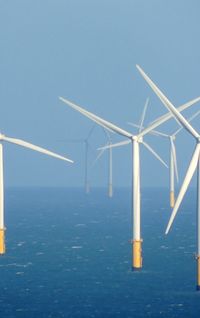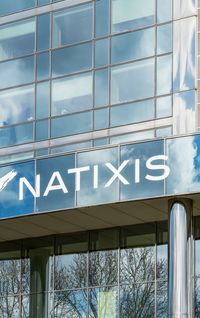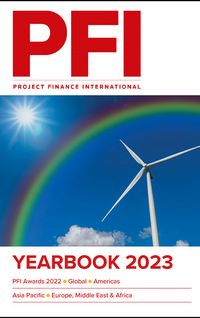South Africa started loosening energy regulations this year. Two landmark project financings closed under liberalised terms, showing that energy suppliers, energy consumers and project financiers are excited about deregulation stepping in to tackle the country’s decade-long energy crisis. By Cristiana Sandeva.
Rand Merchant Bank was mandated lead arranger on the first long-term limited-recourse project financing deal for captive power, which closed in June for Johannesburg-listed miner Harmony Gold. The R1.5bn (US$98m) solar loan will back part of the construction of a 300MW three-phase solar project to power Harmony’s mining operations under a 15-year PPA. Law firm Allen & Overy advised RMB. The projects have 15-year PPAs in place and are being jointly developed by independent power producers (IPPs) BBEnergy and Energy Group. The assets will connect via a combination of wheeling and behind the meter solutions.
South Africa’s government has set a cap for maximum capacity of single renewables projects at 100MW. The cap used to be 1MW last year and was increased this year, with talks and hopes that it could soon be lifted altogether. As things are standing now, the project will be developed in three phases of 100MW each, at three separate sites via three separate special purpose vehicles by the same duo of developers, and power different Harmony sites.
The two IPPs developing the solar plants will sell renewable energy to Harmony at tariffs that will rise at a predictable price path for the next 15 years – while at the same time generating an acceptable return for the shareholders of the IPPs. An initial 30MW for phase one is being equity-funded by project sponsors African Clean Energy Developments, African Infrastructure Investment Managers and Mahlako Energy Fund. It is due to enter commercial operation by April. Phase two is scheduled for operations in 2025. Phase three is in the advanced planning stage.
Harmony’s was the first IPP project financing to close under South Africa’s initial amendments on electricity regulations, favouring the growth of the private power industry in South Africa. One of the key amendments was the introduction of wheeling deal. A wheeling deal is “an offset transaction where Eskom, as South Africa’s transmission system operator, meters the IPP generation and the offtaker’s usage and sets off the kWhs generated by the IPP against the offtaker’s Eskom invoice”, Allen & Overy explained.
The biggest wheeling story of the year came to print in September, with the financial close of the second landmark deal this year, the SOLA/Tronox deal financing. The Johannesburg team of Allen & Overy advised New York-listed miner Tronox as offtaker for a 200MW solar CPPA with Cape Town-based independent power producer (IPP) SOLA Group. The deal marked the largest project financing in Africa to be signed featuring a CPPA on the buyer’s side, with debt totalling R3.1bn from Nedbank, Absa, Standard Bank and Development Bank of South Africa (DBSA).
Not only was the Tronox/SOLA 20-year CPPA the largest deal of its type on the continent, but also the first to close under updated rules on contract termination between IPPs and offtakers in South Africa.
“Under the new regime, IPPs would only receive a termination payment equal to a multiple of annual revenue due, between three to five years forecast revenue. This leaves offtakers with a significantly reduced liability to IPPs and is the first step towards accepting that where one offtaker defaults, the IPP would be in a position to find an alternative. The fact that project finance lenders have now banked this position goes some way to cement this view,” said Alexandra Cluver, partner and Alexandra Felekis, counsel at Allen & Overy.
They noted how significant the progress has been in a rather short time, saying: “When private generation started, the market was very concerned about the grid risk because wheeling connects to Eskom and as the whole world knows, the Eskom network is not the most reliable”.
A key incentive to the shift in confidence is the fact that lenders have understood, through Harmony and SOLA, that the most effective way to de-risk project financing is to make sure the risk is shared between the lending, buying, and selling parties.
“The fundamental difference is that if you have an on-site PPA, then it directly connects to the buyer system, which means the IPP and the lenders have no way to mitigate their loss if the offtaker terminates the agreement prematurely – if the power plants are co-located and on the buyers land, there is no de-risking mechanism in place if the buyer drops off,” Felekis and Cluver said.
Before the regulations were amended and before wheeling was introduced, the risk for offtakers was also too high to take, as the project debt had to be repaid entirely by the buyer in case of seller default.
French renewables developer Voltalia scored a 20-year CPPA with Anglo-Australian mining major Rio Tinto in October. The two signed an agreement for Rio Tinto to buy wheel electricity from the planned 148MW Bolobedu PV plant, Voltalia’s largest solar project in South Africa. Allen & Overy is advising Rio Tinto, which will power its mineral sands unit Richard Bay Minerals. RMB is understood to have signed an initial financing agreement with Voltalia. Rio Tinto is understood to be providing equity financing for project construction.
The termination compensation regime is constantly experiencing updates, and the terms on Tronox are outdated compared with the ones being discussed now for Rio Tinto, Felekis noted. “Moving to more innovative compensation structures especially in terms of buyer default enables sellers to mitigate losses more. Shifts are happening across the PPAs and every PPA is slightly different,” she said and added that in the future “we will probably see more aggregation type platforms rather than the bilateral arrangements we are working on right now”.
South African chemicals producer Sasol is due to sign wheeling CPPAs with two IPPs for 300MW of wind projects by year-end, PFI understands. One IPP will develop a 100MW project and the other will develop 200MW, split into 100MW each, as there is a 100MW cap for single renewable energy projects in South Africa. The projects will power the same Sasol production facility from three sites, wheeling energy through the grid of South Africa's national utility Eskom. The IPPs will be closing project financing next year with debt from local commercial banks. The CPPAs will be the first under Sasol and French industrial gas supplier Air Liquide's joint energy procurement programme, launched in 2021 to award 600MW of renewable capacity to supply their South African operations.
Two more IPPs have been selected under the programme, which will sign CPPAs early next year, PFI understands. Sasol will be the offtaker for the two IPPs due to sign PPAs this year, while Sasol and Air Liquide will sign offtakes on a 60:40 ratio with the other two IPPs next year. The two companies have been able to launch their private procurement programme because Sasol owns part of Eskom’s distribution network, and Air Liquide is connected to the Sasol grid.
There are plans in place to raise the programme's goal to 900MW, aiming to award procurement of an extra 300MW in 2023. The procurement is also key to Sasol’s green hydrogen strategy. Local lenders are lining up to structure project financing deals under the Sasol procurement programme in a structure similar to the Harmony Gold deal. The same structure is expected on 17 out of the 20 deals to close under the programme, which will be signing wheeling CPPAs. The other three will be connected to the grid and probably will not be project-financed.
Allen & Overy is currently involved in 20 captive power projects on all sides of the equation, some on the buyer side including Tronox, some on the lender side, and some on the side of IPPs. Buyers that Allen & Overy is currently advising include offtakers Glencore, Sasol, Air Liquide, Anglo American and Richards Bay Minerals. All the projects the law firm is working on are being structured on a limited-recourse financing basis.
In terms of financiers, local banks remain the most active because they don’t have to deal with currency exchange rates, and it is easier to raise debt in rand. That would only change once C&I pan-African platforms step into the country’s energy market, bringing with them US dollar-denominated debt from international commercial banks to back, and large investments on a portfolio basis, Cluver said.
Renewable facilities are usually able to supplement about 30% to 40% of the offtakers’ total consumption needs, with the rest still reliant on Eskom and or on a municipal supply model. Mines are less subject to load-shedding, Cluver and Felekis explained, only because they have contracts with Eskom where they can choose which of their operations can get curtailed when a loadshedding episode occurs. Other industrial-type users have other generators such as diesel plants.
“Even if you are running on renewables, you need baseload capacity to balance the intermittency out while the sun is shining. You would need to run the renewable power plant concurrently with a battery or a generator or Eskom grid connection. Everything kind of feeds off each other at the moment,” Cluver said, explaining that projects in the wheeling space in South Africa currently work mostly through netting transactions.
“In essence, the energy generated and delivered at the delivery point on the IPP side is metered on a monthly basis, and is credited against the invoices that the buyer receives from Eskom. This applies to users which have a direct relationship with Eskom. Should Municipal wheeling be contemplated, this is more complex as not all municipalities have a uniform approach to this or clarified their policies.”
Energy trading is something to keep on watch in the future deregulated South African space, Felekis and Cluver suggested. Gauteng-based developer SolarAfrica signed a 20-year wheeling PPA in November with Cape Town-based energy trader Enpower Trading for 100MW of solar power. Enpower secured a trading licence in February from the National Energy Regulator of South Africa (NERSA), making it the second private company to receive a power trading licence in South Africa's history and the first to get a licence in more than 12 years.
Enpower said it is looking to sign PPAs with IPPs and sell the energy "at a discounted price to prevailing electricity tariffs", wheeling the power through national and municipal grid networks to reach end-customers. The company said the mechanism works by signing an offtake agreement with a NERSA-registered IPP that is connected to either a municipal or national utility Eskom's grid, then signing a use of system agreement (UoSA) with a given municipality acting as distributor, which Enpower pays for using its grid. Customers sign PPAs with Enpower, which outlines the amount of energy to be supplied at which rate.
To see the digital version of this report, please click here
To purchase printed copies or a PDF of this report, please email leonie.welss@lseg.com

















